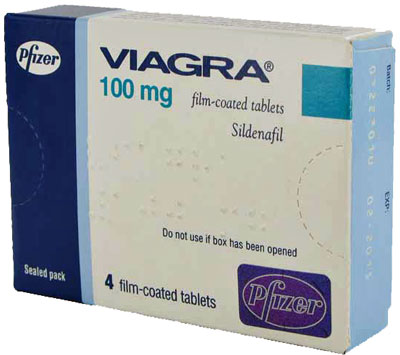 Ingredients
Ingredients-
- Sildenafil citrate
- Microcrystalline cellulose
- Anhydrous dibasic calcium phosphate
- Croscarmellose sodium
- Magnesium stearate
- Hypromellose
- Titanium dioxide
- Lactose
- Triacetin
- FD&C Blue aluminium lake
Published September 2011
Ingredients
Sildenafil citrate [C22H30N6O4S] was discovered in the UK by pharmaceutical chemists searching for a treatment for angina. The drug relieved pain by relaxing the arteries but men testing it reported unexpected and prolonged erections. An erection is caused naturally by the release of nitric oxide (NO) molecules in response to sexual stimulation. These molecules stimulate an enzyme to release cyclic guanosine monophosphate (aka CGMP) which increases blood flow to the penis and it becomes erect. Meanwhile another enzyme, phosphodiesterase-5, is actively removing cGMP albeit not at a rate to cause the erection to subside. However, in some men this enzyme's role can result in partial or unsustainable erections, hence the need for Viagra. Sildenafil blocks phosphodiesterase-5 so the penis stays more erect and for longer.
Microcrystalline cellulose is a pure form of cellulose extracted from wood pulp. It consists of long chains of linked glucose molecules and it is easily compacted. It acts as an excipient, which is not an active ingredient but it is there to help the tablet disintegrate when it reaches the stomach.
Anhydrous dibasic calcium phosphate [aka E341, CaHPO4] is there merely to bulk out the tablet. This salt is used as an acidity regulator in baking powders and added to the flour for making noodles.
Croscarmellose sodium is another form of cellulose but its chains are cross-linked and this too is an excipient, in this case causing the tablet to swell when it becomes moist.
Magnesium stearate [Mg(C18H35O2)2] is added to the mixture of ingredients as a lubricant so that when these are stamped into tablets they don't stick to the machinery.
Hypromellose [aka E464, hydroxyproply methylcellulose] is a modified form of cellulose in which there are methyl groups (CH3) and hydroxypropyl groups (C3H7O) attached to the glucose molecules that make up the cellulose chain. Hypromellose is a very viscous and sticky liquid which finds use in tile adhesive and in foods as a thickening agent. Here it acts partly as a glue and partly as a controlled release agent for the sildenafil so that its effects will last longer.
Titanium dioxide [chemical formula TiO2] is a brilliant white and used in paints and in confectioner's icing, for example for wedding cakes. It is added to dilute the blue dye used to colour the tablet to give a paler shade of blue.
Lactose [C12H22O11] is there to bulk out the tablet. It consists of two simple sugars, glucose and galactose bonded together.
Triacetin [aka 1,2,3-triacetoxypropane, C9H14O6] is added to prevent the tablet from drying out and becoming powdery. It was once use use to treat fungal skin infections, and is used in cigarette filters to keep the fibres soft.
FD&C Blue aluminium lake. A lake consist of dye molecules bonded to a metal atom, the object being to make the dye insoluble. Here the metal is aluminium and the dye is bright blue indole-sulfonic acid. A lake is chemically stable and so the dye will pass through the gut without being absorbed.
Other uses for ingredients
Titanium dioxide is brilliantly white and used in paints and iced confectionery.
Hypromellose is used as a tile adhesive.